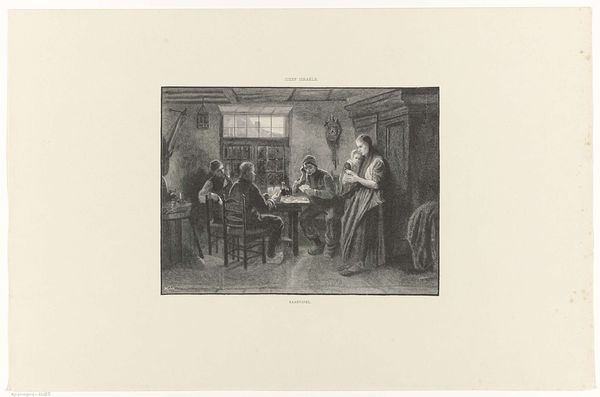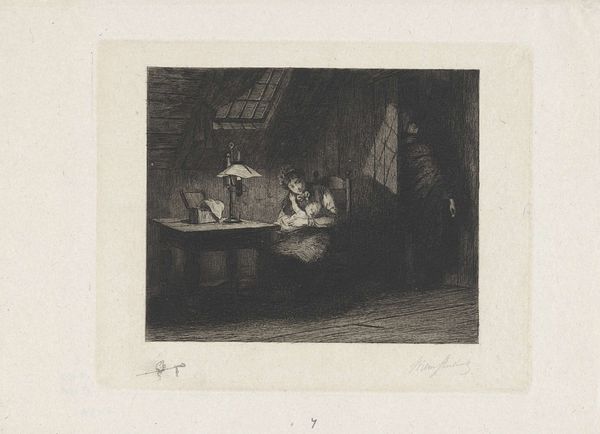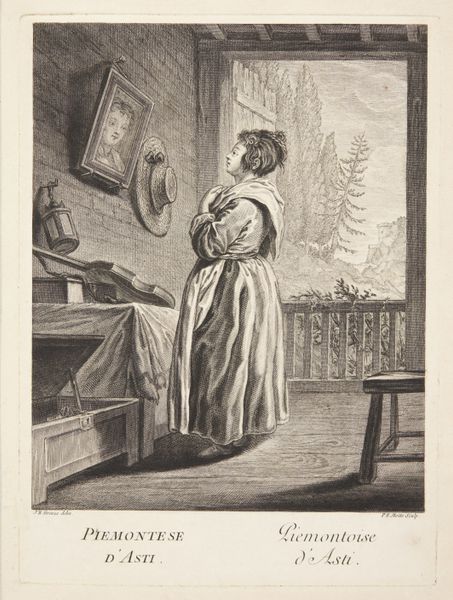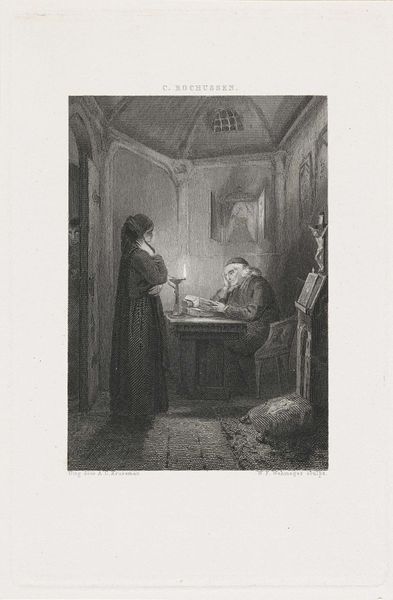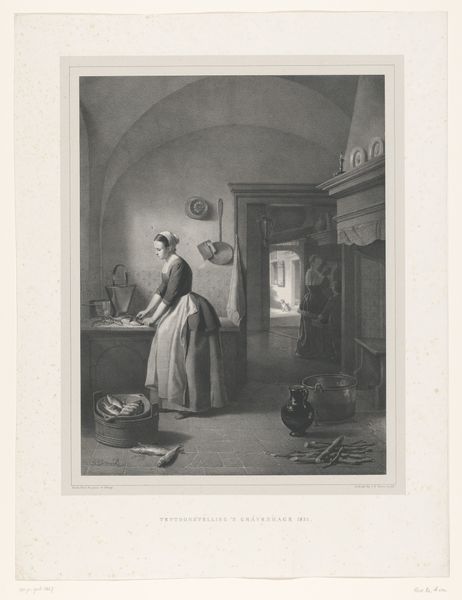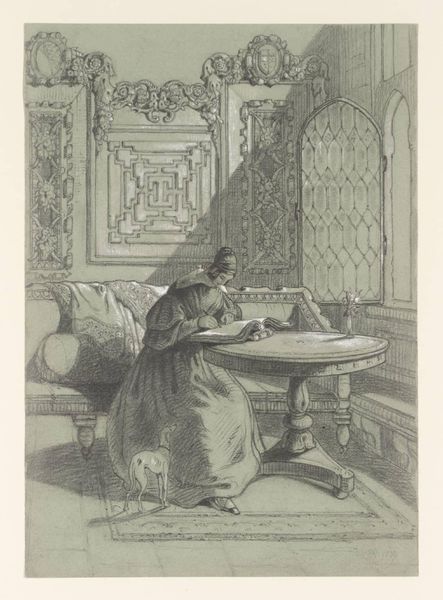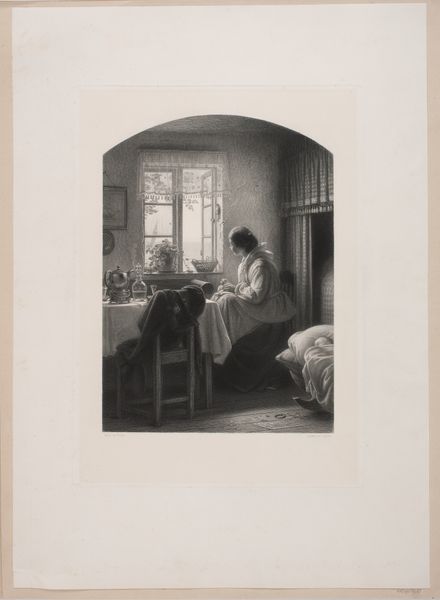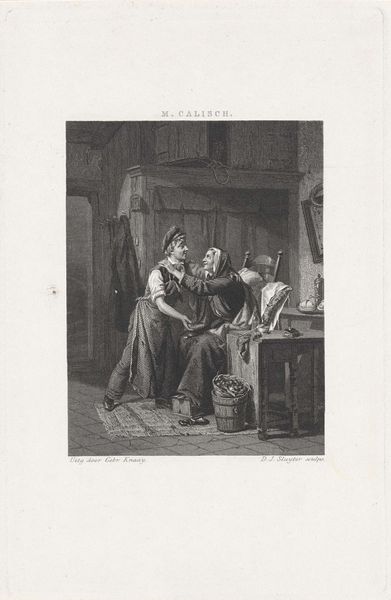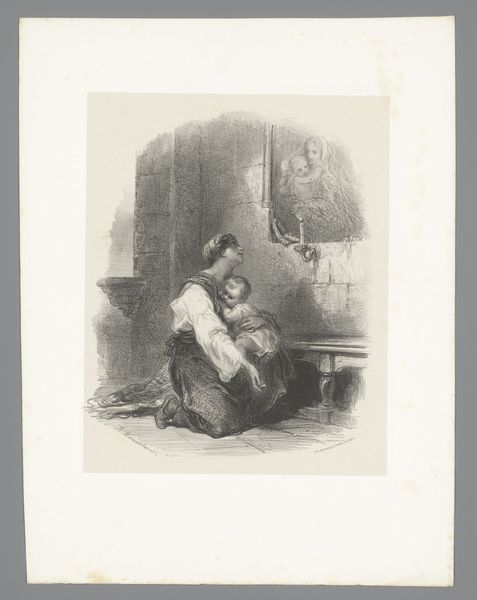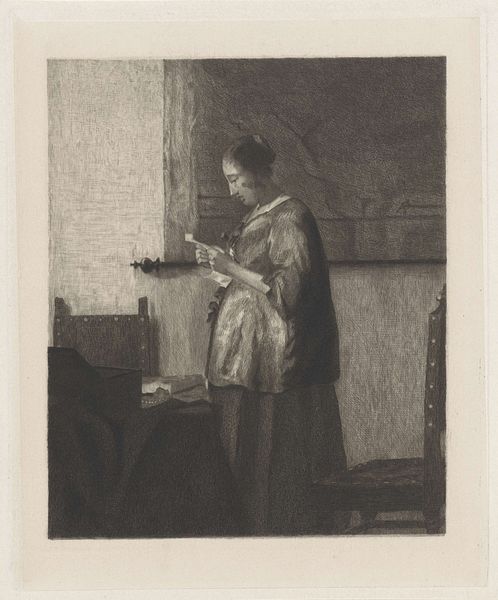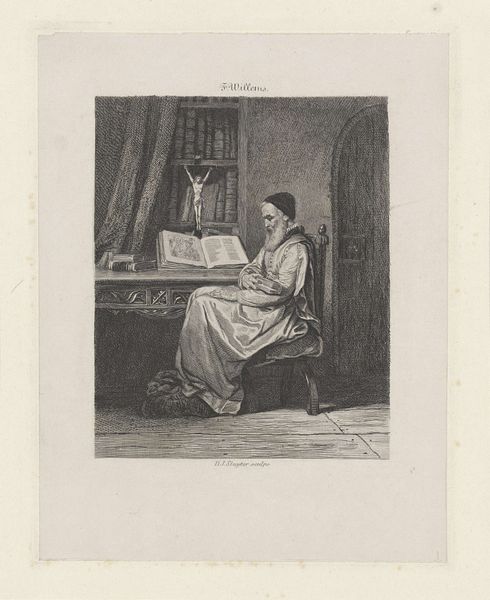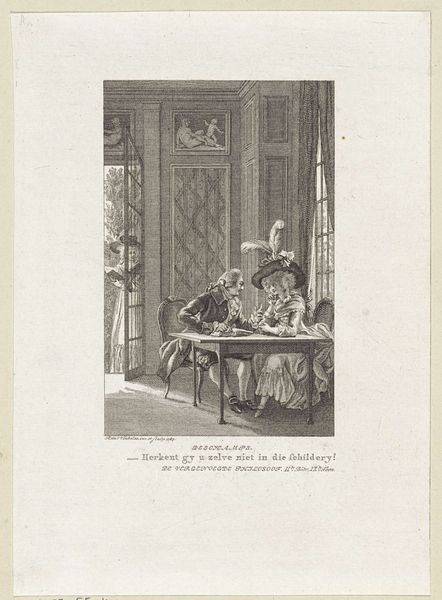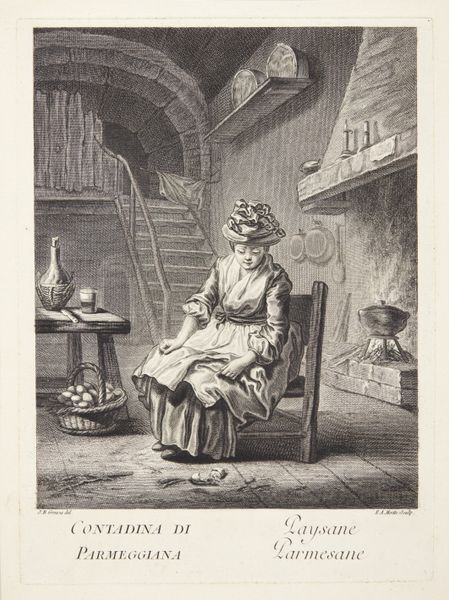
drawing, print, ink, engraving
#
drawing
# print
#
old engraving style
#
ink
#
genre-painting
#
northern-renaissance
#
engraving
#
realism
Dimensions: height 365 mm, width 259 mm
Copyright: Rijks Museum: Open Domain
Curator: What strikes me first is the tender concentration captured in this engraving, the intimacy of the scene. Editor: Alphonse Marie van den Braak created this drawing-turned-print entitled "De schrijfles," or "The Writing Lesson," sometime between 1878 and 1879. Curator: Yes, a snapshot into a domestic scene; you can almost smell the faint scent of ink mixing with simmering herbs, creating a cozy atmosphere. I'm curious about the old engraving style it emulates; there’s a stark contrast between light and shadow, creating real depth in what is otherwise, basically, black and white! Editor: Right. That tension, the stark binary of light and dark, mirrors the complexities within the act of learning itself, of either acquiring or being denied access to knowledge through writing. Who gets to participate and why? Curator: I get that, it's not just about academics. And, perhaps unintentionally, there is something almost... unnerving in this supposed ‘coziness’. She looms over him as though imposing not assisting. Editor: That is spot-on. The power dynamic at play! The woman, in her apron and cap, instructing a presumably younger figure; what is that relationship, what are its constraints? It hints at questions around gendered labor, domesticity, and unequal access to education that persists even today. Curator: I'd not considered the activist perspective like that - instead, I got absorbed into the artist's meticulous attention to detail—look at the textures on her dress, the careful rendering of each item on those cluttered shelves. This attention suggests an almost devotional gaze toward the everyday. Editor: Exactly. Art isn’t neutral. Every choice an artist makes, from the medium to the subject matter, consciously or unconsciously, reflects the ideologies of its time. We are therefore able to look at these artworks through a social lens that invites scrutiny and conversation. Curator: I see that now; what began as a personal reflection for me on warmth and dedication opens out into discussions on access, power, gender… wonderful! Editor: Yes. Art allows us to hold both intimate emotions and broader societal reflections in tension. A small peek into past conditions which reflect contemporary predicaments - what more can you ask?
Comments
No comments
Be the first to comment and join the conversation on the ultimate creative platform.
